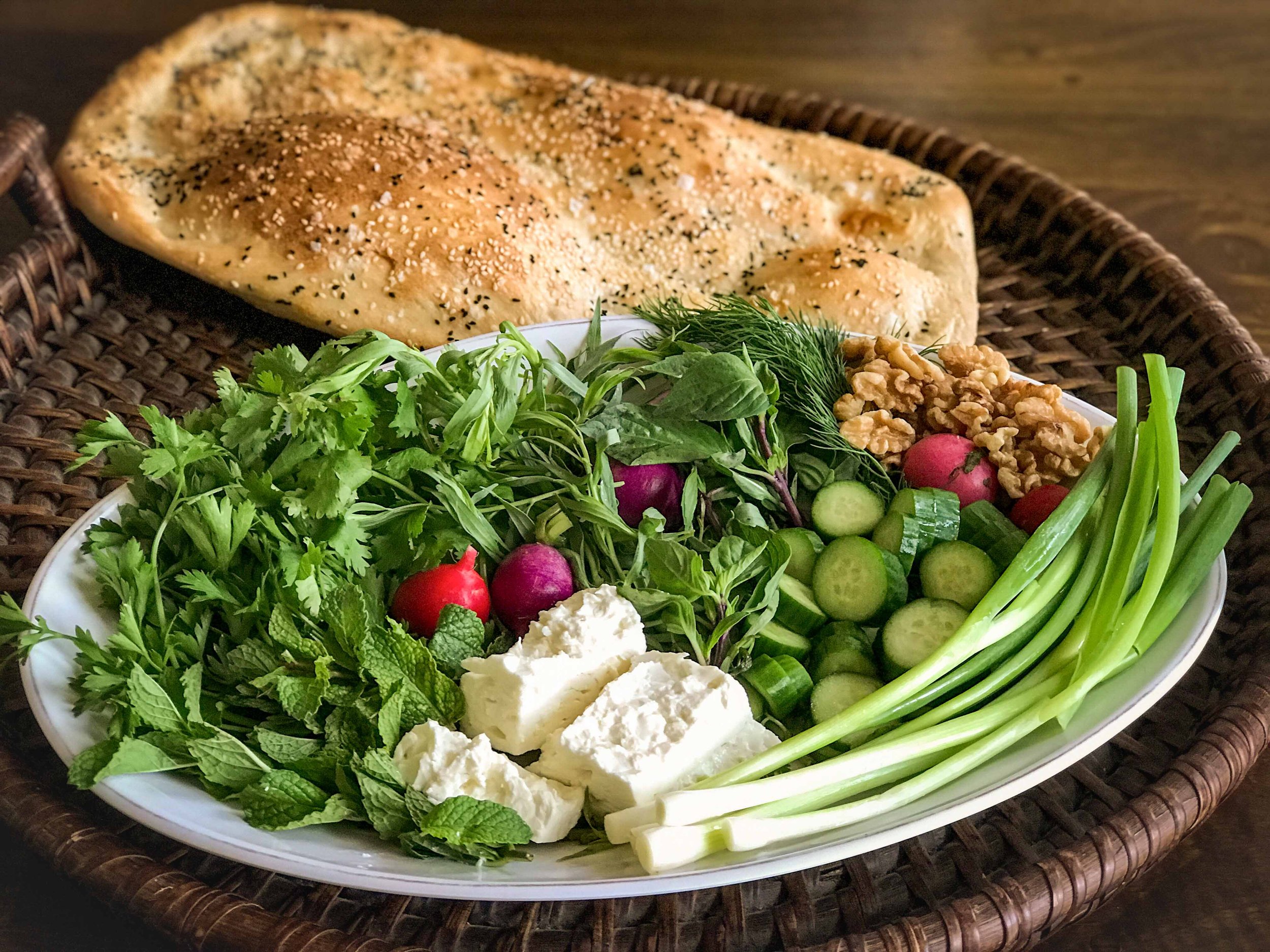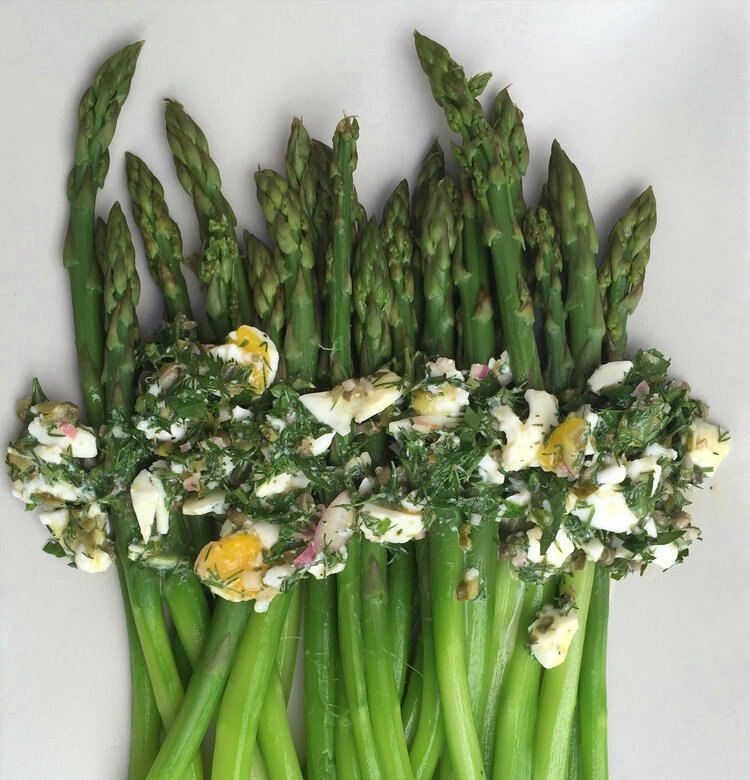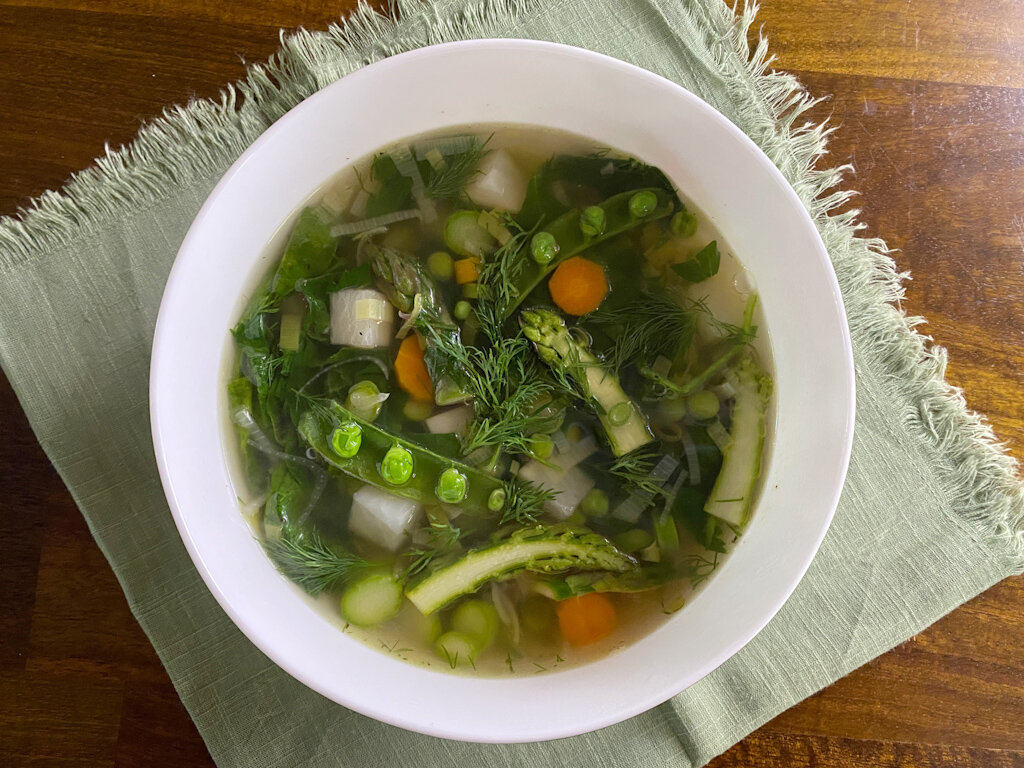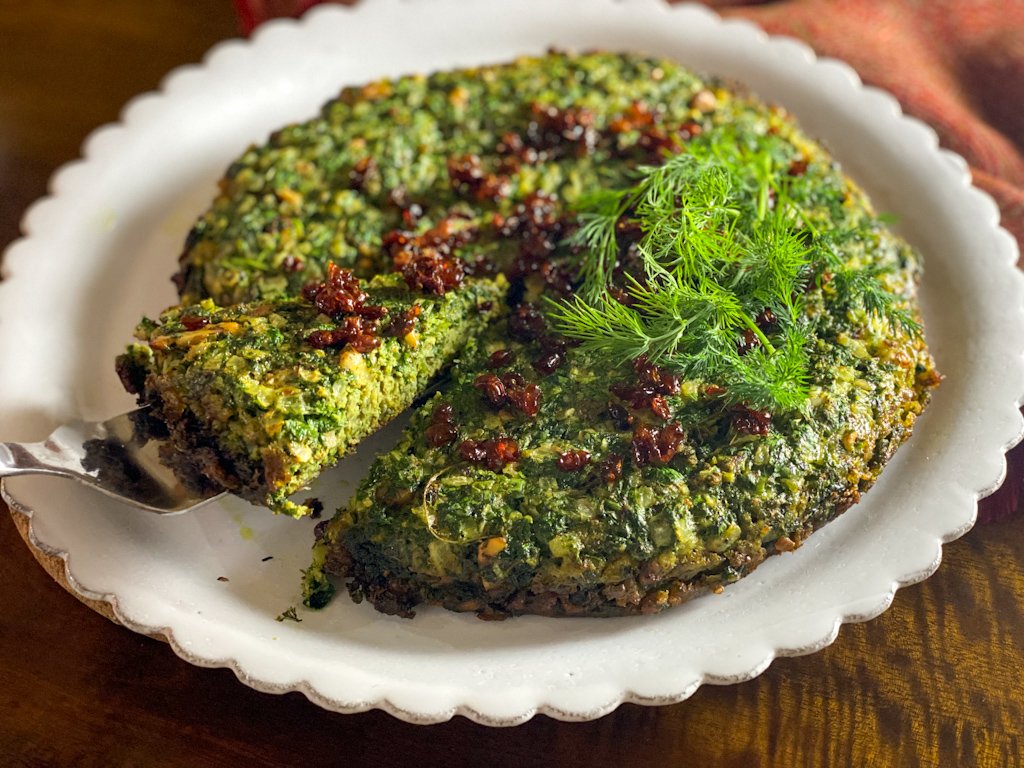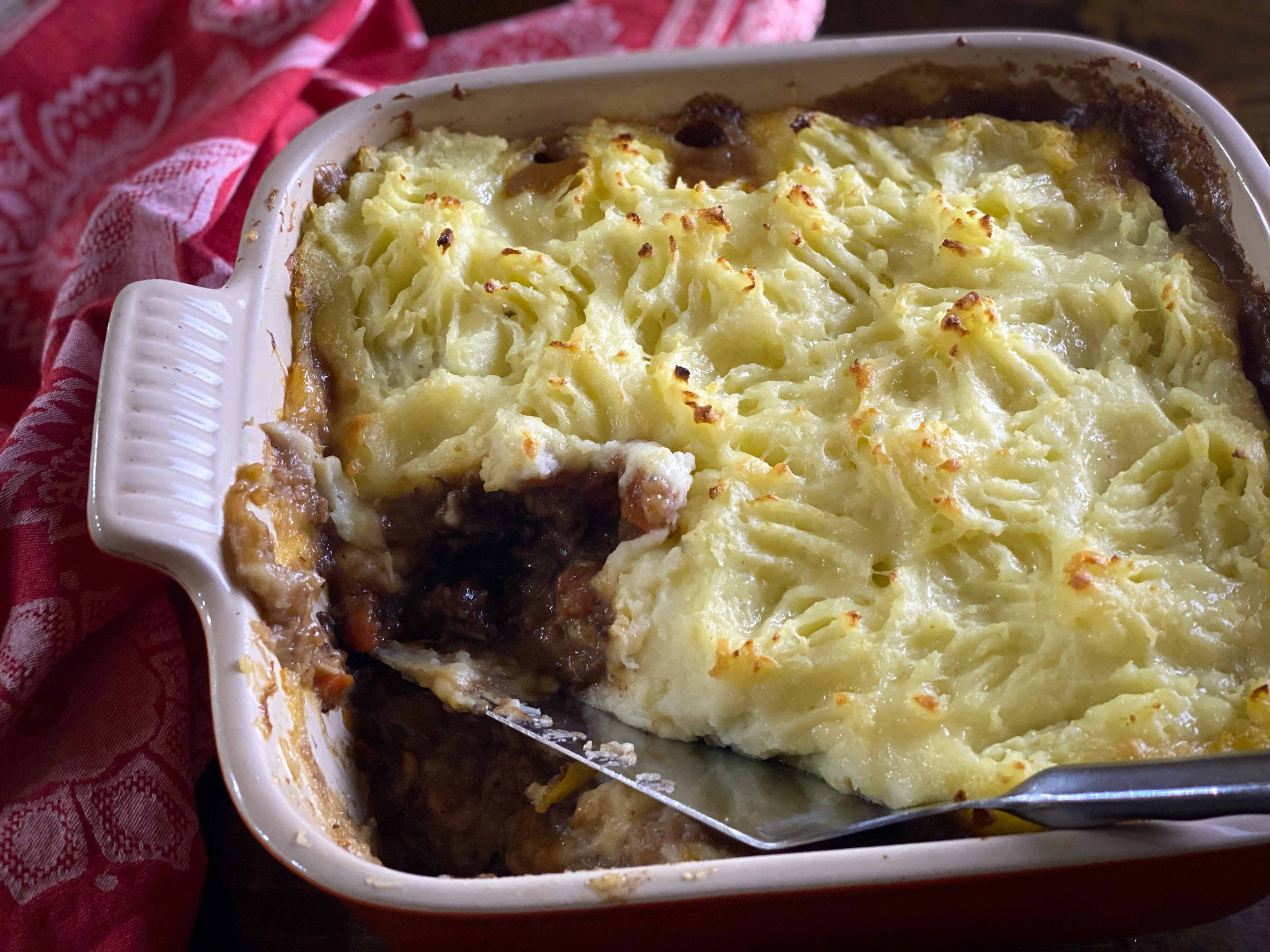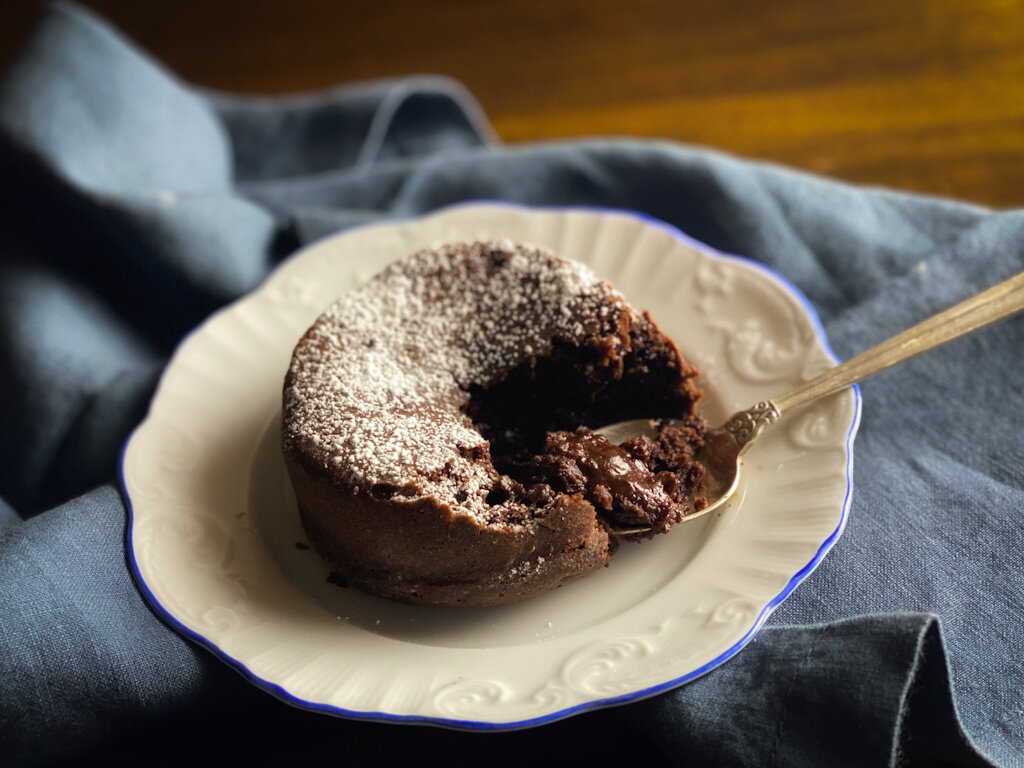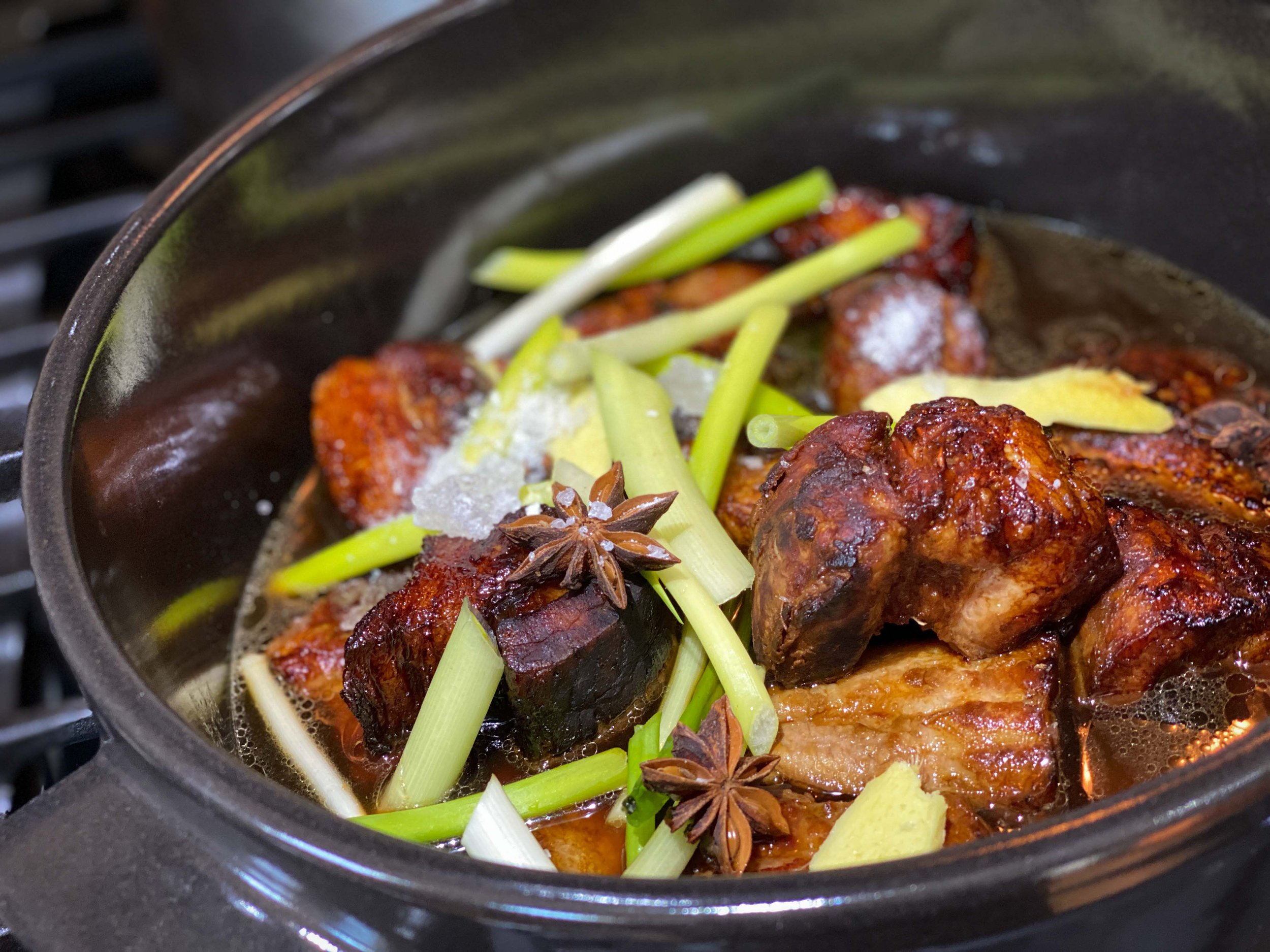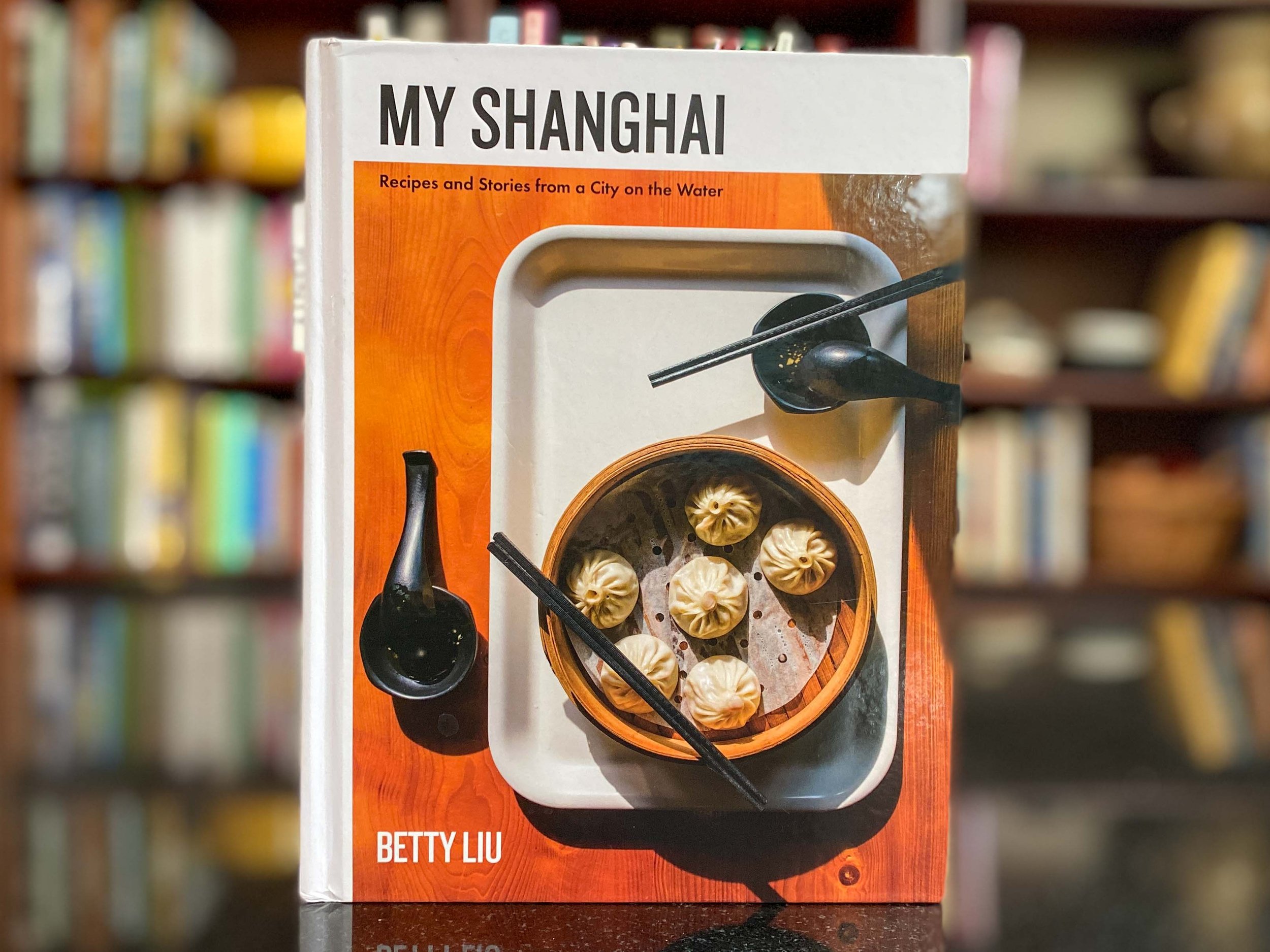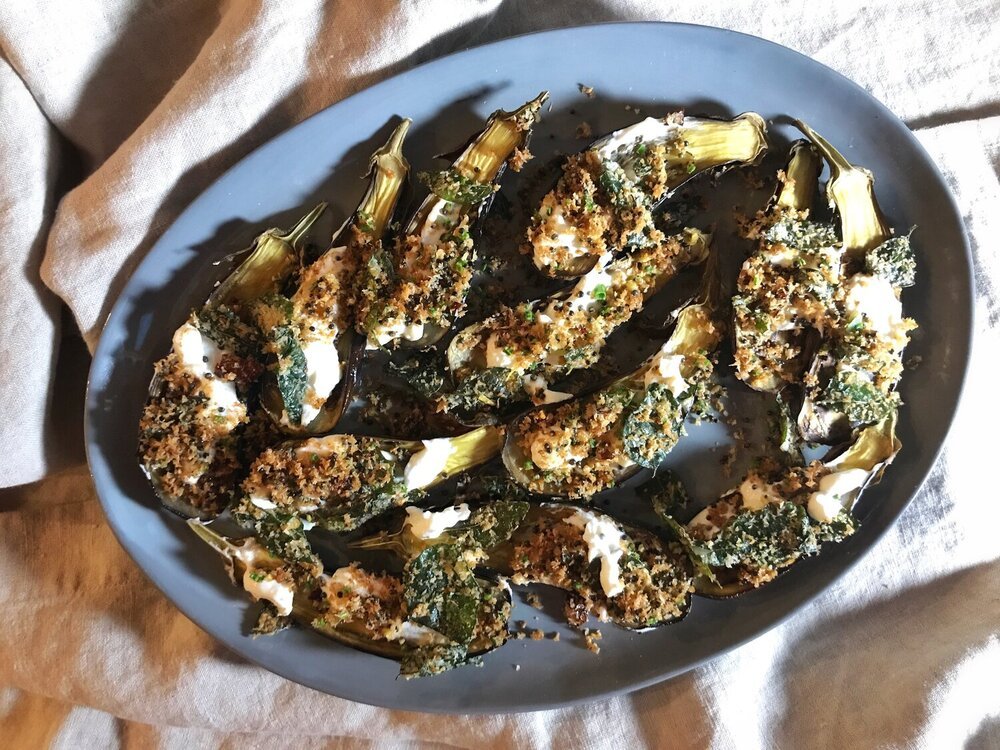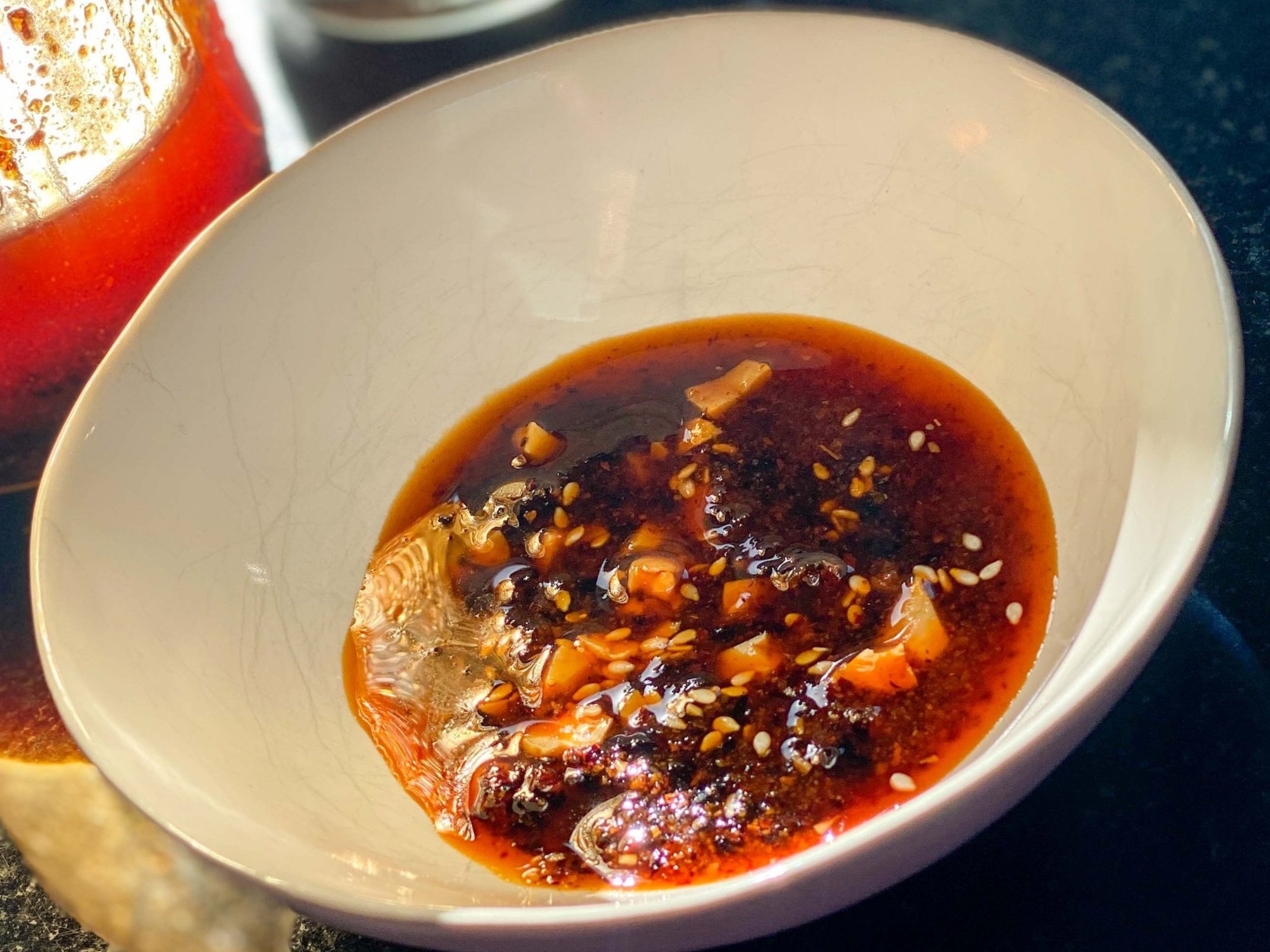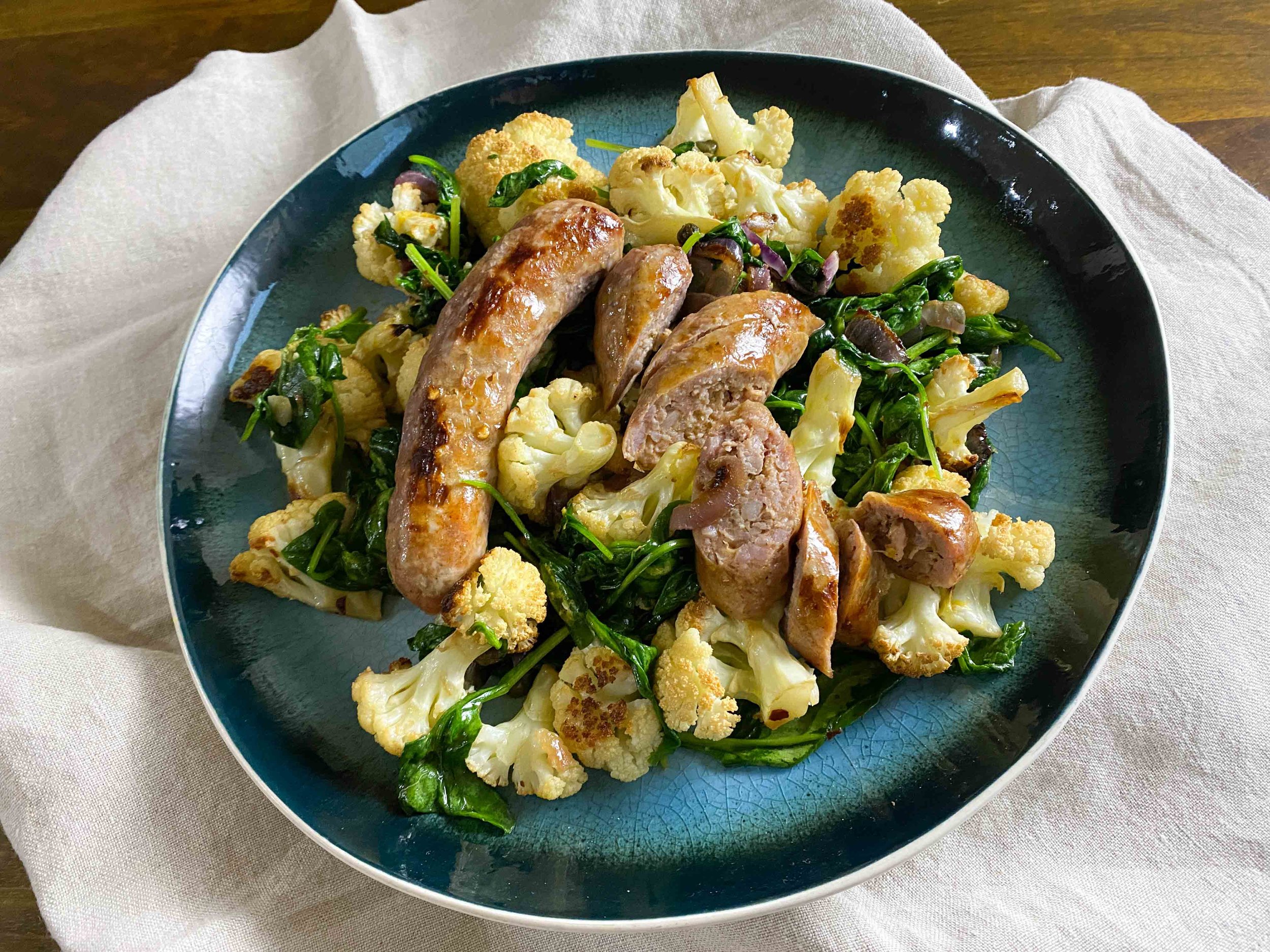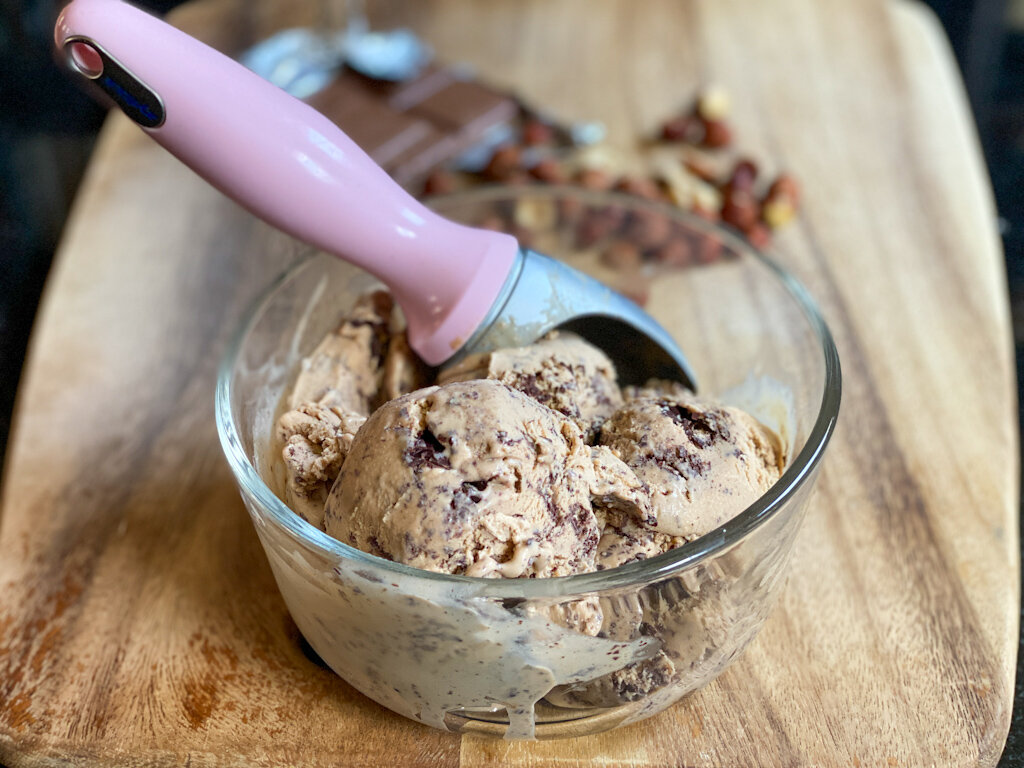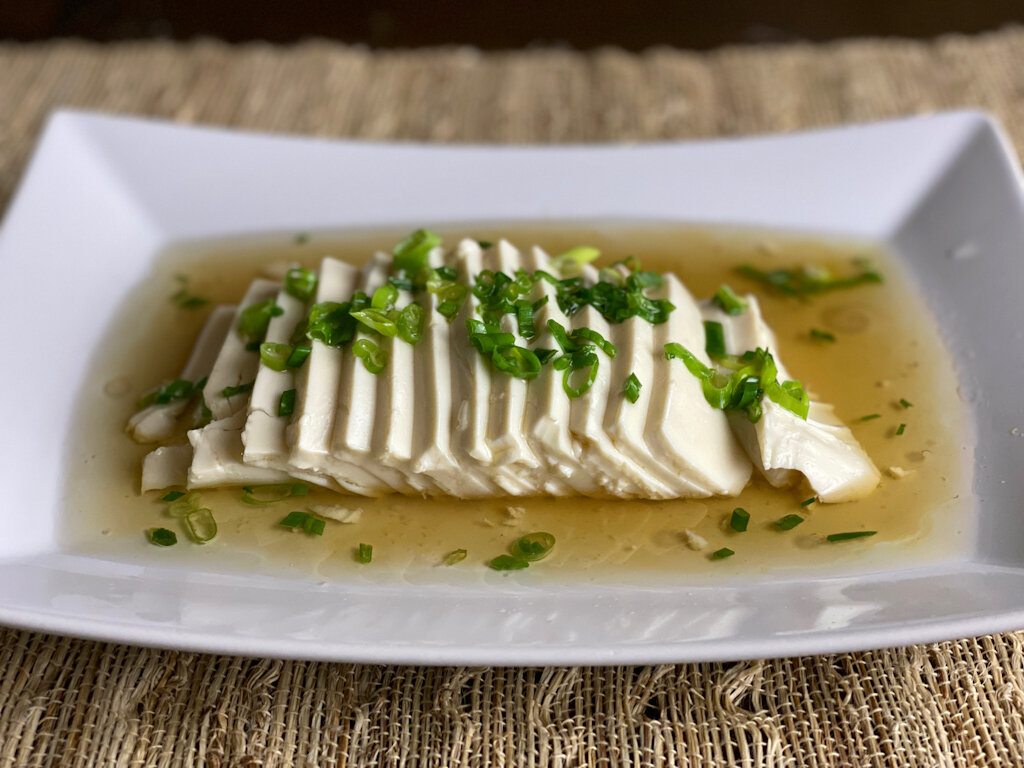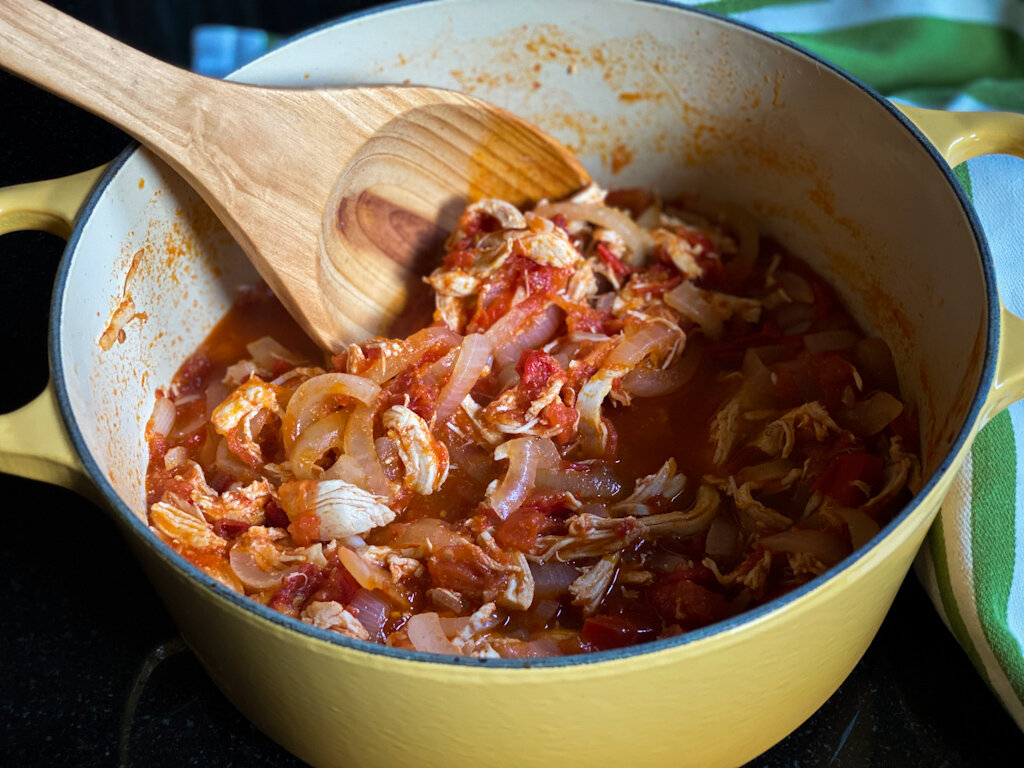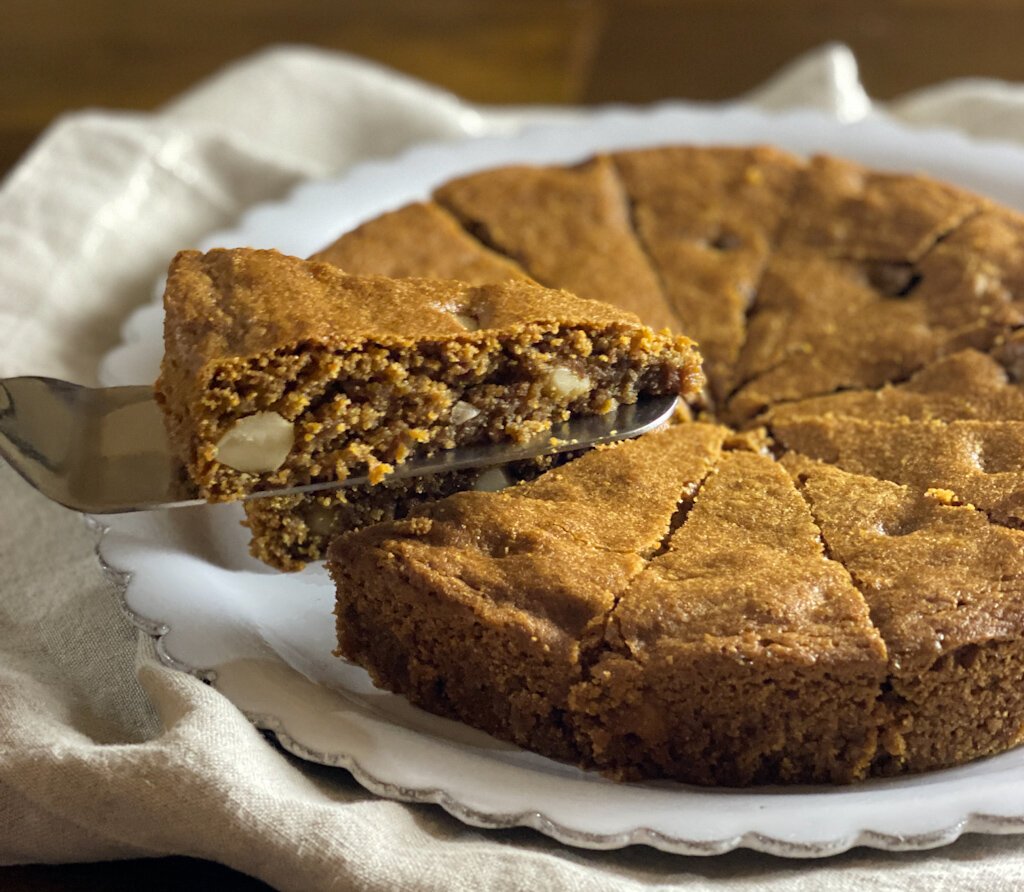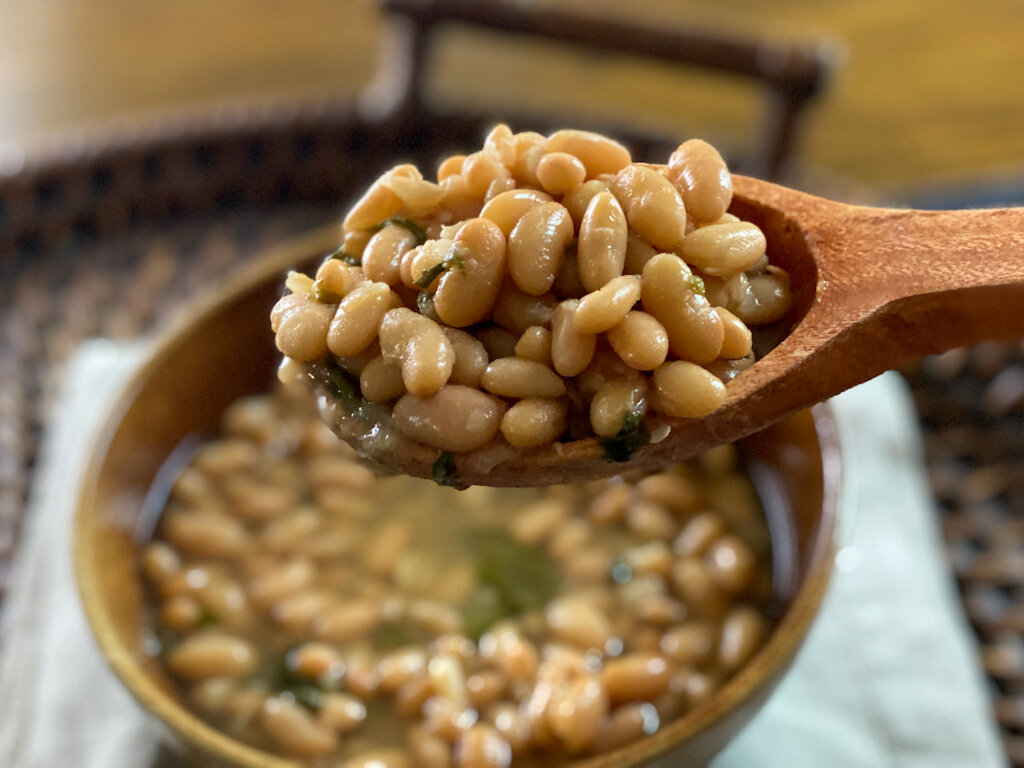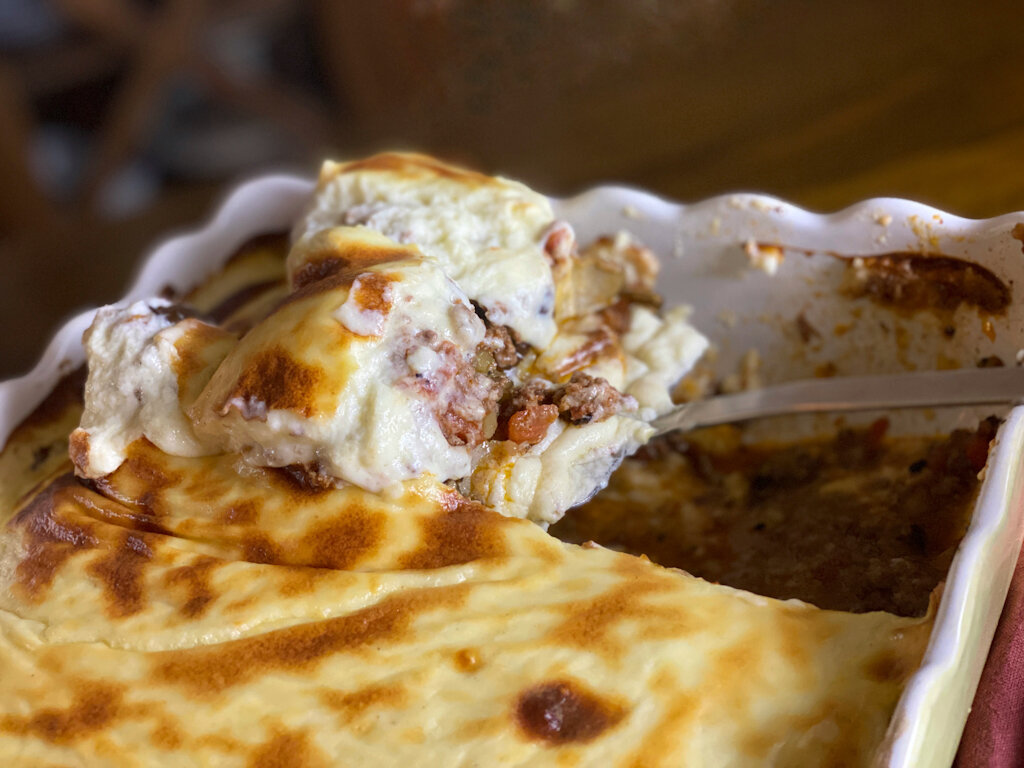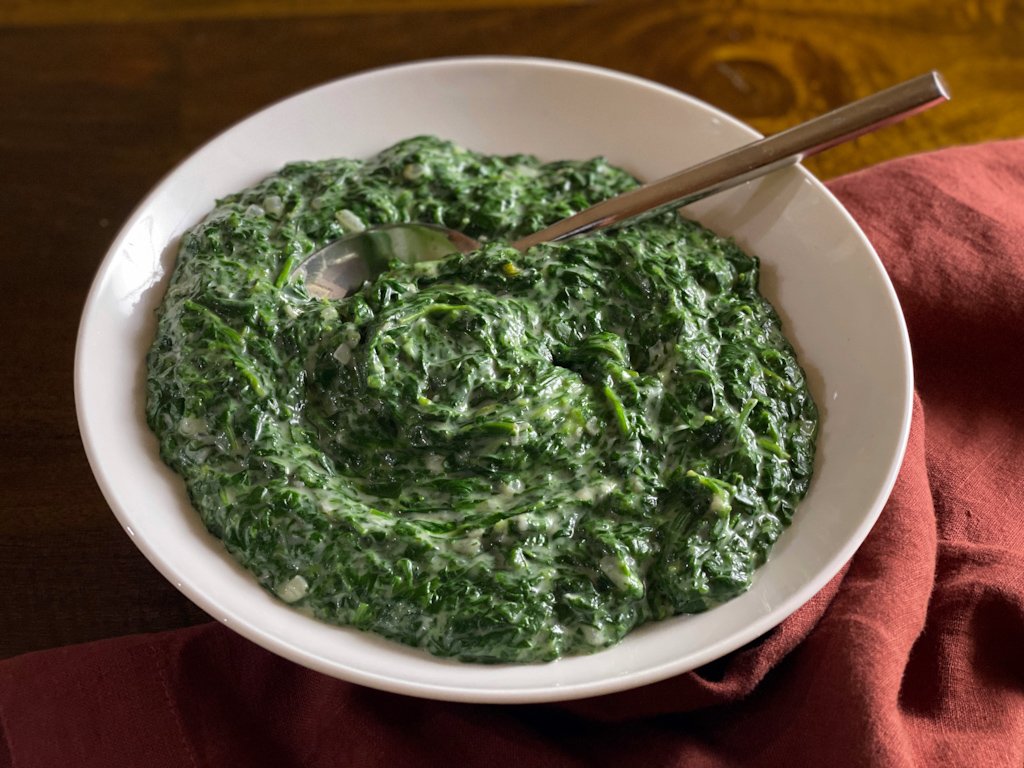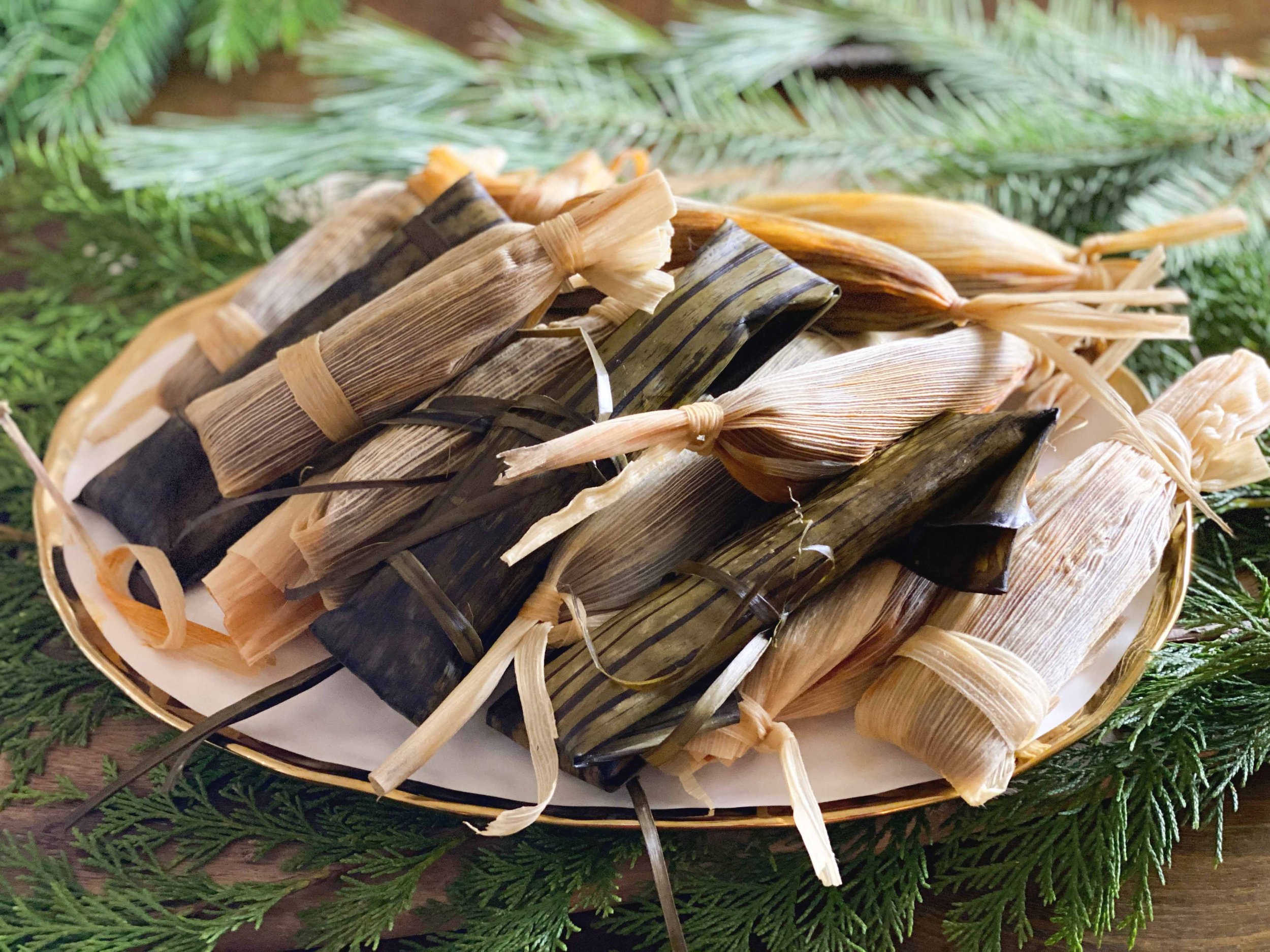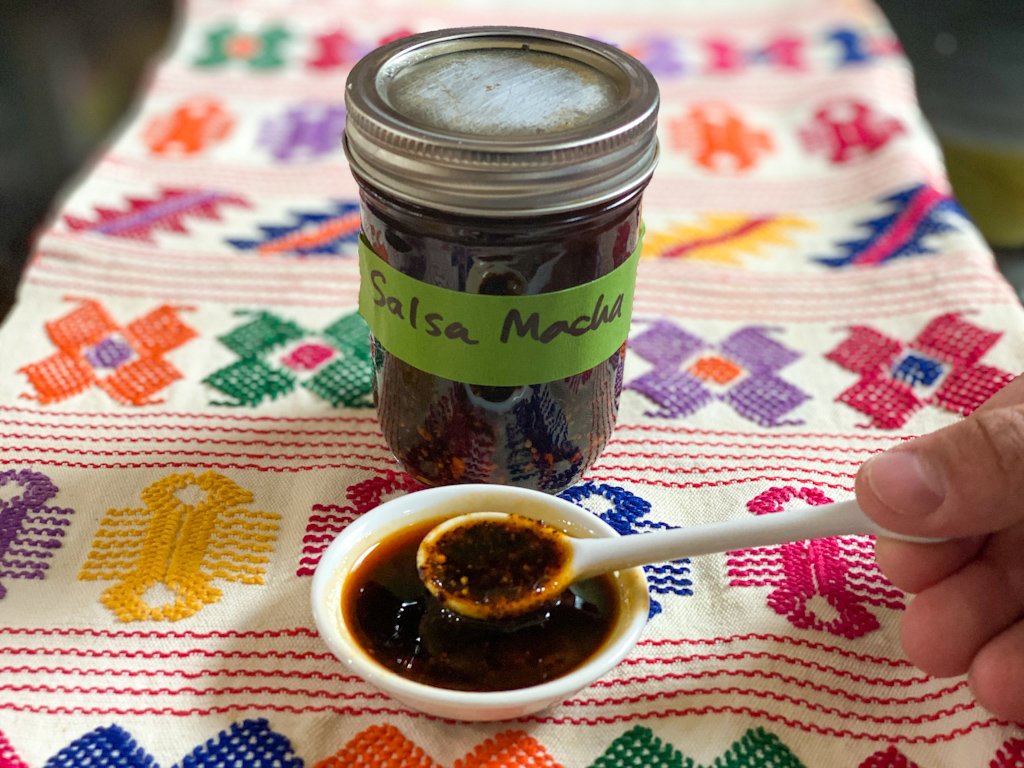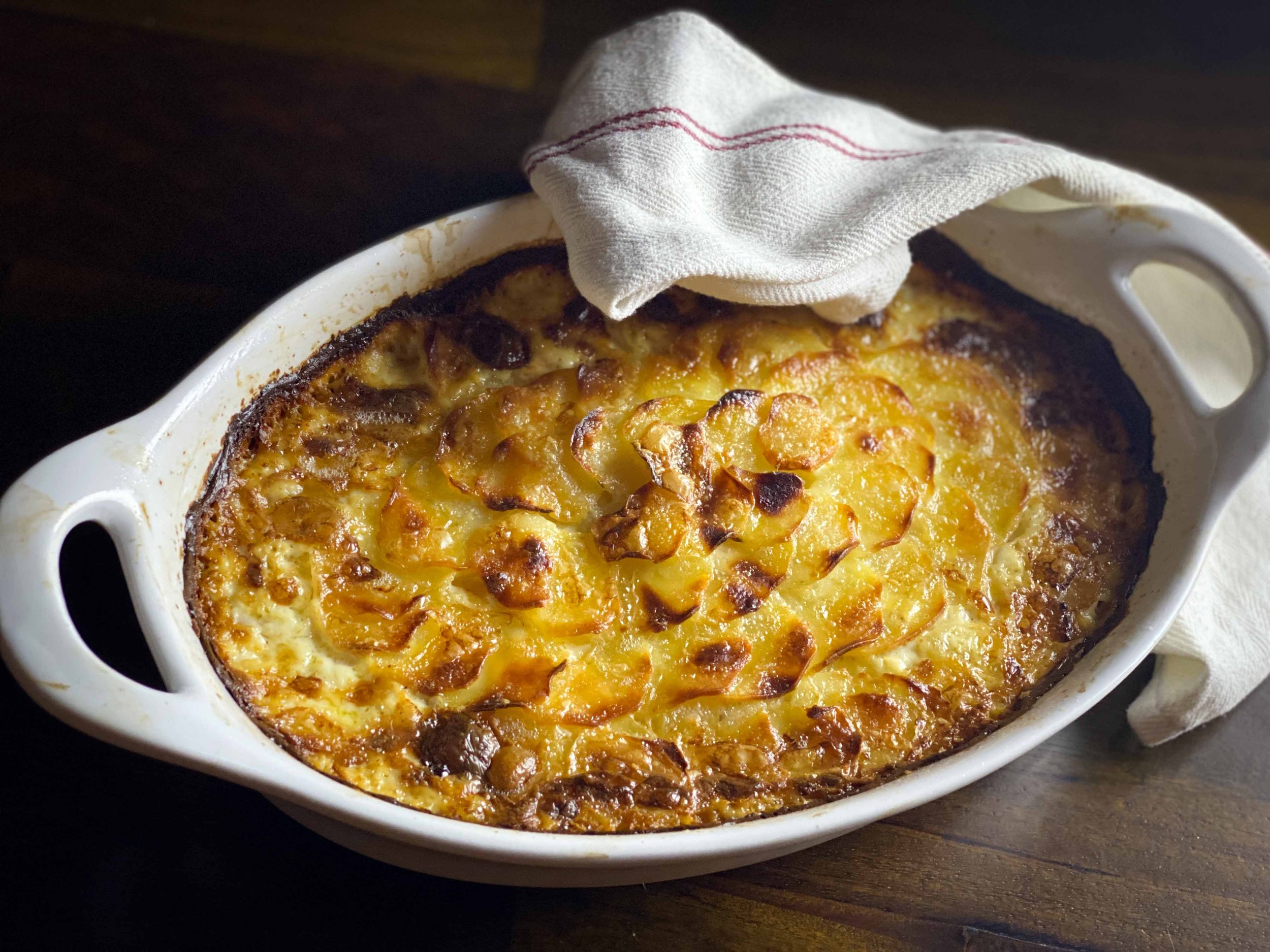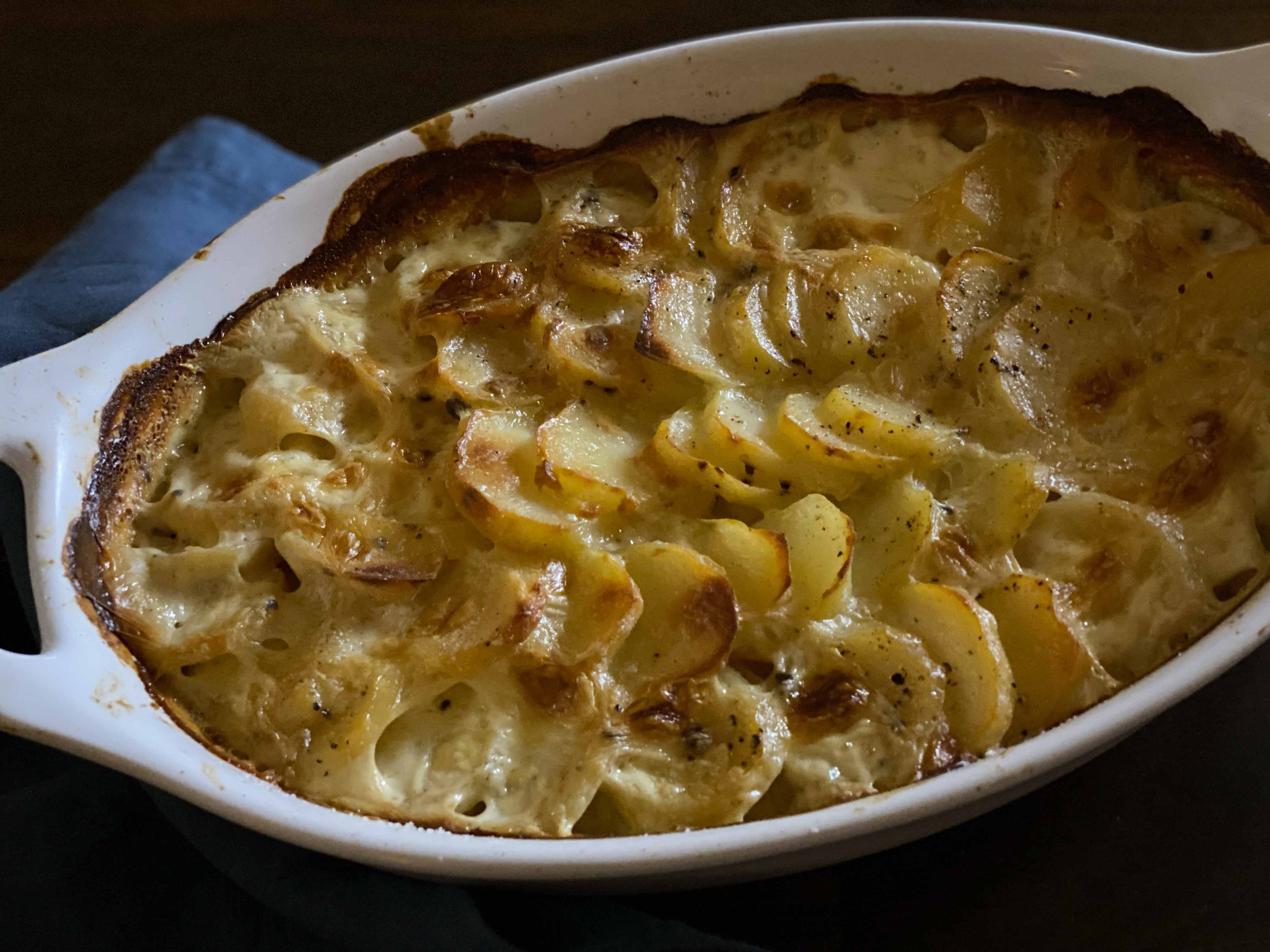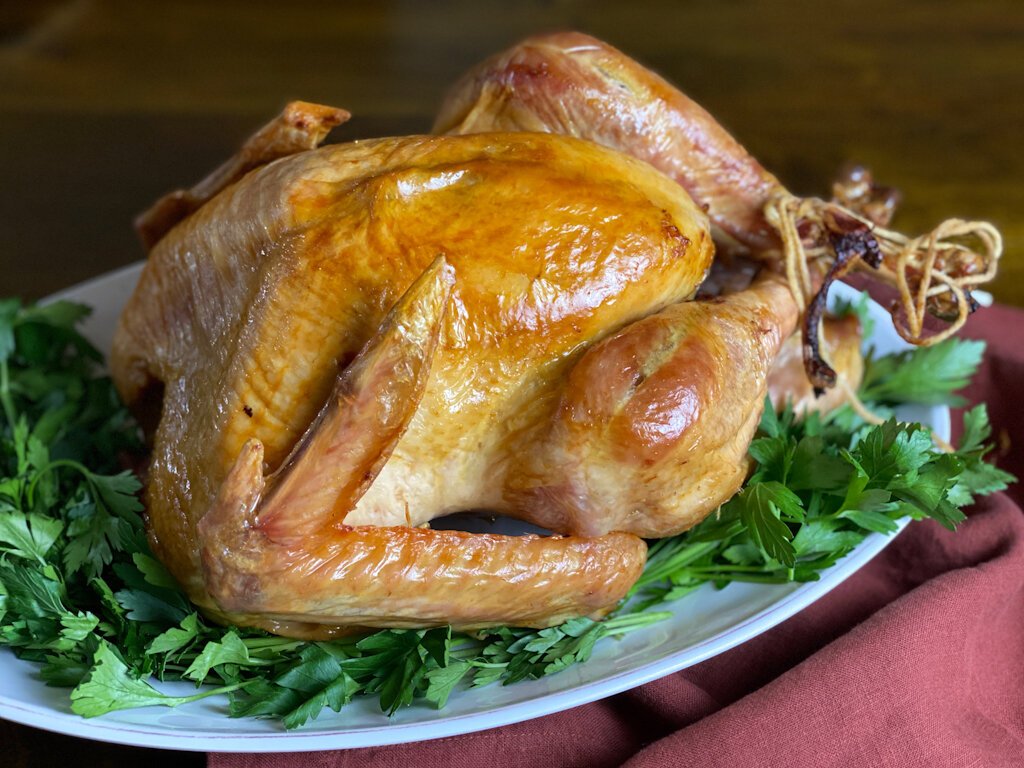David’s recipe differs slightly from mine — she has you rinse the potatoes (which she says is “most important”) and she uses pepper; she uses quite a bit more cream (both initially and in total), cooks the thing longer and at a lower temp, then cranks up the heat for the last 10 minutes, without adding additional cream. I love her assessment of how many you can serve with a gratin made with 1 pound of potatoes and a half-pint of cream:
“It is not easy to say how many people this will serve; two, or three, or four, according to their capacity, and what there is to follow.”
Finally, her instruction to cut the potatoes “no thicker than a penny” aligns perfectly with other authoritative versions, which usually specify a thickness of two to three millimeters, or about an eighth of an inch.
Origin of the word ‘gratin’
To understand the origin of gratin, I turned to Larousse Gastronomique, the encyclopedia of French cuisine. (I referred to the 2001 edition of the English translation, which was updated in 2009.)
Gratin, it tells us, is:
“The golden crust that forms on the surface of a dish when it is browned in the oven or put under the grill (broiler). Usually the top of the dish has been coated with grated cheese, breadcrumbs or eggs and breadcrumbs. Formerly, “gratin” was the crust adhering to the cooking receptacle, which was scraped off (gratté in French) and eaten as a titbit.”
Aha — so gratin means that crusty bit! The recipe that follows in Larousse includes whisked eggs, a much shorter cooking time than either my recipe or David’s. Grated cheese (Gruyère) is only mentioned at the end as a variation.
The Oxford Companion to Food backs that up with its entry for Gratin and Gratiner, the noun and the verb respectively:
“Originally, back in the 16th century or beyond, the noun referred to that part of a cooked dish which stuck to the pot or pan and had to be scraped (gratté) off it was not to be wasted. Since the 19th century the meaning has changed to the effect deliberately created by cooks when they cook a dish so that it has a crisply baked top. This is often achieved by strewing grated cheese or breadcrumbs on top, and the phrase ‘au gratin’ is often taken to mean ‘with grated cheese,’ although the gratin effect can be produced without adding anything on top; as Ayto (1993) points out, the gratin dauphinois is correctly made of sliced potatoes baked in cream with no added topping.”
Potato specifics and the crusty factor
I’m not finding much definitive info on the type of potatoes that are correct. I feel most comfortable going with Jean-François Piège, whose recipe for Notre Gratin Dauphinois in his encyclopedic 2020 cookbook Le Grand Livre de la Cuisine Français calls for “pommes de terre à chair ferme” (firm-fleshed potatoes), adding “veillez à ne pas utiliser de pommes de terre nouvelles” (be sure not to use new potatoes). (The book has not been published in an English translation.) There are more than one variety of potatoes that would fit that description; our recipe calls for widely available Yukon Golds. No cheese in Piège’s, bien sûr; besides potatoes, the only ingredients are cream, garlic, butter, nutmeg and (curiously) skim milk.
J. Kenji López-Alt does not give a recipe for gratin dauphinois in The Food Lab, nor could I find any discussion in its pages about rinsing potatoes for a gratin, pro or con. Sohla El-Waylly offers a spin-off on Serious Eats — “Classic Rich and Silky Potato Gratin” — developed following “rounds and rounds of testing.” Her complaint with traditional gratin dauphinois is that only the crusty browned top is worth eating, so her version is meant to have cheese and potato that has browned on the “bottom, sides, and top.” Even more crusty is López-Alt’s turned-on-its-side Hasselback Potato Gratin on Serious Eats, which uses quite a bit of cheese and gets maximum crusty surface. Both use Russet potatoes, not rinsed. I haven’t tried El-Waylly’s version, which is a good deal more involved and has many more ingredients than traditional ones (milk in addition to cream, plus thyme, shallots, Parmesan and Gruyère). I have tried Lòpez-Alt’s, and enjoyed it a lot.
But I’m sure I’ll make mine more often: I find it beautiful in its simplicity, much easier to prepare, not as messy or involved, more elegant, and I actually love the creamy, rich underneath part, which I find a wonderful contrast to the top crusty part. (How could you not?!) It’s a classic for a reason.
How it got its name
Gratin dauphinois is sometimes confused with pommes dauphine — mashed potatoes mixed with choux paste and butter, formed into walnut-shaped balls, and fried, causing them to puff up. (Rabbit-hole moment: Where does the word “dauphine” come from? Nope — I’m resisting going there).
Dauphinois refers to Le Dauphiné, a former region of Southeast France whose history dates back to the Romans, who called it Delphinatus Viennensis. Interesting to note that the word dauphin, which means an unseated king, derives from that. In the 11th century it became part of the Holy Roman Empire, known as Le Dauphiné. Was the dish invented then? Was it a favorite of Guiges IV, Count of Albon — the nobleman in the region whose nickname was “Dauphin”? The rabbit hole didn’t extend that far down, fortunately or unfortunately.
What we do know is that the dish comes from that region; hence the name. We also know that the Rhône Valley was part of that region — and therefore a white Rhône wine would be a magnificent thing to drink with the dish. Gratin Dauphinois with a white Châteaunef-du-Pape? I can think of worse ways to spend the holidays.

